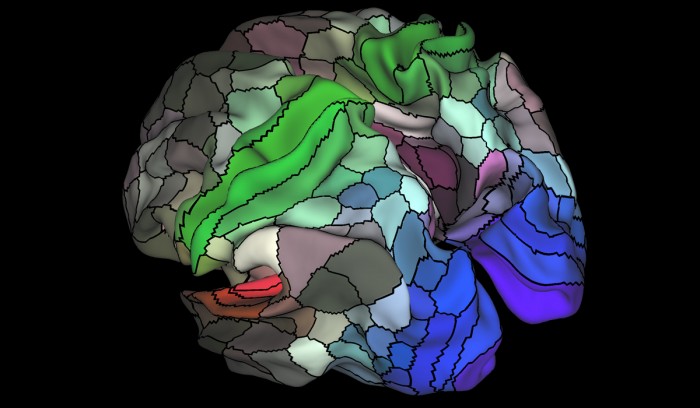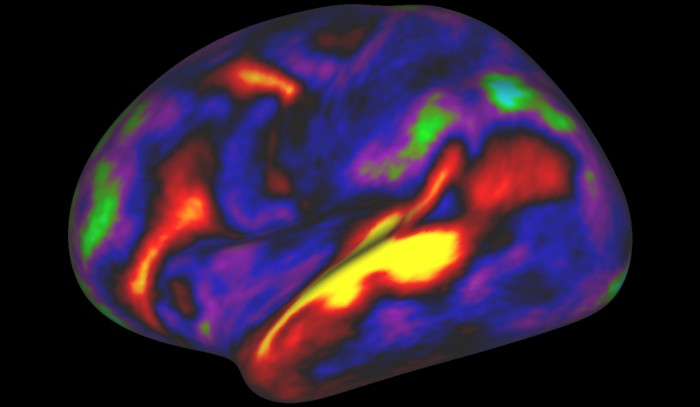The Map of the Human Brain Is Finally Getting More Useful
The human brain is a little bit less of a mystery today, thanks to new maps from neuroscientists at Washington University Medical School. Not only did they identify more brain regions than previous maps, they also made a machine-learning program to re-create a new map for any brain, which will help scientists and doctors study individual differences in brain structure and disease, and will hopefully lead to new ways to diagnose brain disorders.
The new map of the brain’s outermost crinkled layer, called the cerebral cortex, was published in Nature today. David Van Essen, the lead mapmaker, calls it a landmark study for the Human Connectome Project, which he heads.

Researcher Matthew Glasser says that unlike many previous studies, this map considers several features of the brain simultaneously to mark its boundaries. Some neuroscientists still define brain regions based on a historical map called Brodmann’s areas that was published in 1909. That map divided each half of the brain into 52 regions. Each hemisphere on the new map has 180 regions.
Glasser defined these regions by looking for places where multiple traits—such as the thickness of the cortex, its function, or its connectivity to other regions—were changing together. After drawing the map onto one set of brains, the researchers developed an algorithm to recognize the regions in a new set of brains where the size and boundaries vary from person to person. “It’s not just a map that people can make reference to,” Glasser says. “You can actually find the areas in the individuals that somebody is studying.”
Dani Bassett, a neuroscientist at the University of Pennsylvania who was not involved in the study, says that using this map to better understand individual differences is the most exciting part for her. She also noted it’s important for defining brain regions based on both anatomy and function, not one or the other. “It addressed a longstanding question that has been very contentious and they do it in a beautiful, data-driven approach,” she says.

Van Essen also notes that a major goal of this map is to help unify neuroscience by providing a framework for brain imaging studies to be more readily comparable and replicable, a particularly salient point given recent controversies questioning the validity of thousands of brain imaging studies.
Duan Xu, a researcher at the University of California, San Francisco, who was not involved in the study, says “it is great to see that the Human Connectome Project is delivering on some of these high-quality investigations of the cortex.” The $40 million National Institutes of Health endeavor to create the most detailed circuit diagram, or connectome, of the human brain began in 2010.
This map could help scientists and doctors create better ways for diagnosing brain disorders, although exactly how it will be used remains to be seen. “I am an optimist,” Xu says. “I think in a few years we should be able to do this in the clinical setting.”
Deep Dive
Biotechnology and health
How scientists traced a mysterious covid case back to six toilets
When wastewater surveillance turns into a hunt for a single infected individual, the ethics get tricky.
An AI-driven “factory of drugs” claims to have hit a big milestone
Insilico is part of a wave of companies betting on AI as the "next amazing revolution" in biology
The quest to legitimize longevity medicine
Longevity clinics offer a mix of services that largely cater to the wealthy. Now there’s a push to establish their work as a credible medical field.
There is a new most expensive drug in the world. Price tag: $4.25 million
But will the latest gene therapy suffer the curse of the costliest drug?
Stay connected
Get the latest updates from
MIT Technology Review
Discover special offers, top stories, upcoming events, and more.